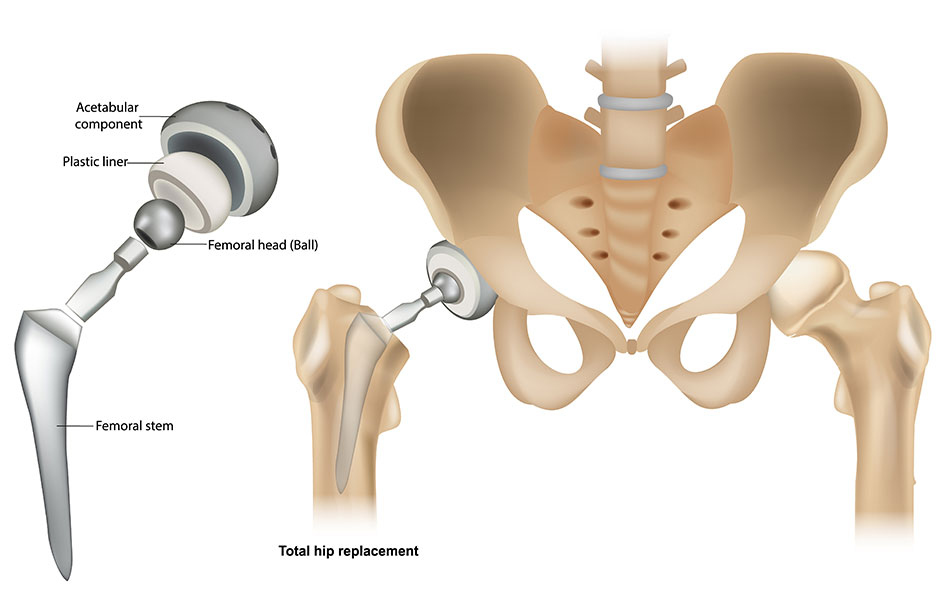Total hip replacement surgery involves removing the hip joint and replacing it with artificial components.
It is considered a well-established and long-lasting procedure for relieving pain associated with hip arthritis. Other common reasons for a hip replacement include a hip fracture or hip dysplasia, a condition in which the hip joint has not developed properly.
The procedure is expected to bring additional benefits including improved mobility and a better quality of life.

Total hip replacement surgery, also known as hip arthroplasty, involves removing the damaged bone and cartilage making up the hip joint and replacing these with prosthetic components. Depending on preference and existing medical conditions, either general or regional (spinal) anaesthetic can be used for the procedure. A 12-15cm long incision is made over the side of the hip and extends towards the buttock, enabling the hip joint to be entered with minimal trauma to the surrounding muscles. The hip is dislocated, and the femur (thigh) bone is cut to expose both the pelvic and leg sides of the joint. Depending upon the quality of the bone and age of the patient either a cemented or cementless component is fixed to the pelvis and similarly to the femur. The ball and socket mechanism of the joint is then reconstructed with a polyethylene (metal on plastic) or ceramic articulation. Following the surgery, the patient is expected to be able to fully weight bear on the hip the day after the procedure. A physiotherapist and nursing staff will instruct on how to safely use a frame initially and then graduate onto crutches. Most patients will be able to discontinue use of the crutches about 4-6 weeks post-surgery. The average hospital stay is 5-7 days then depending upon home supports and progress, the patient will either be discharged home directly or to a rehabilitation facility for a further 7-10 days. Tablet analgesia can be taken for pain with most patients able to cease use by 4 weeks following the surgery. Pain may be more intense when walking or at night. The physiotherapist will emphasise precautions such as sleeping flat on the back, not crossing legs, and using a seat raise for the toilet. An assessment of the home may also be required prior to discharge. Driving a vehicle is prohibited for 6 weeks following surgery and travel as a passenger should also be minimised to reduce the risk of the hip dislocating while the muscles and soft tissues around the joint heal. Upon review by the surgeon 6 weeks post-surgery, most patients are approved to return to recreational walking, swimming, cycling and other recreational pursuits. However, patients are advised to not undertake running or jumping activities following a hip replacement.

If you are looking to book an appointment, please call us on